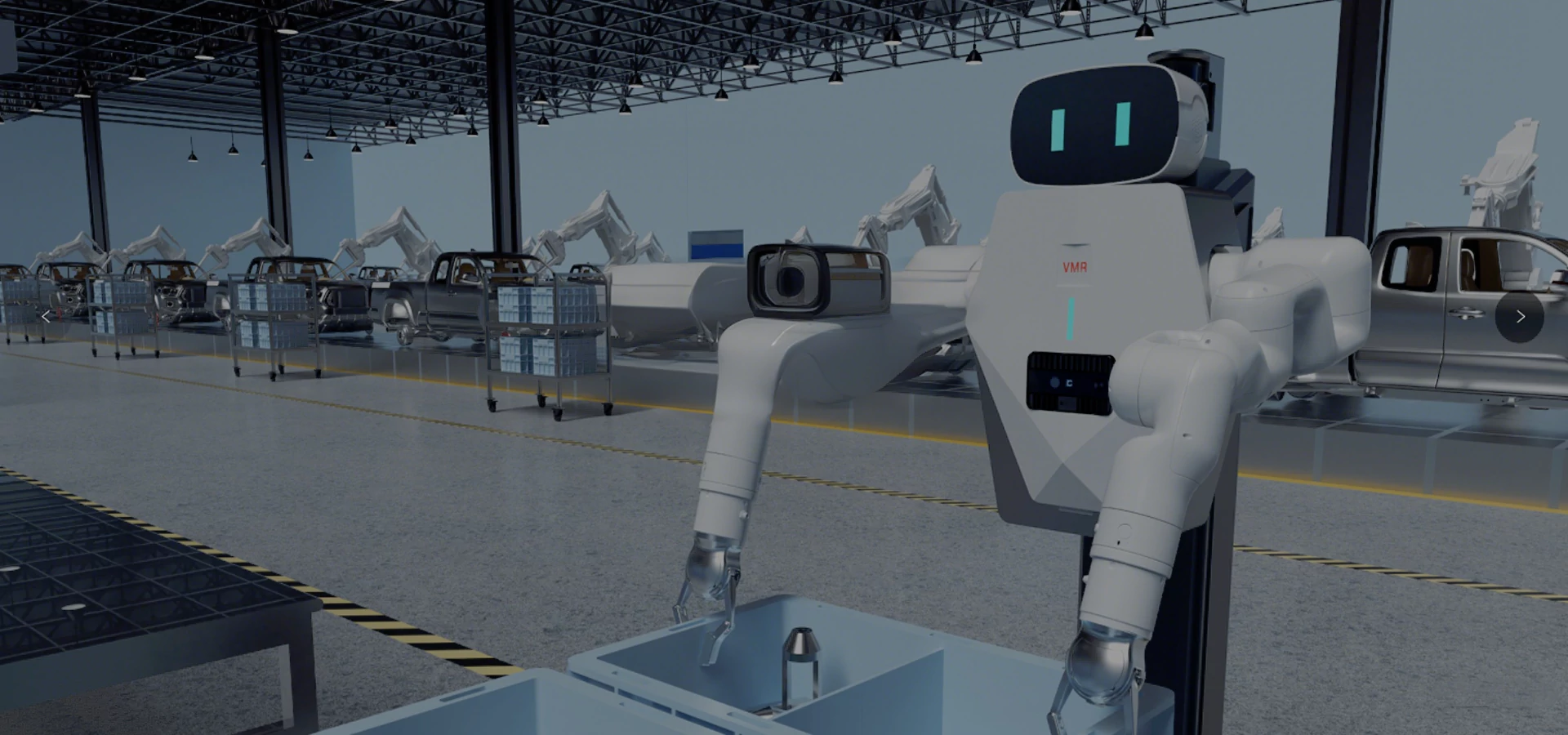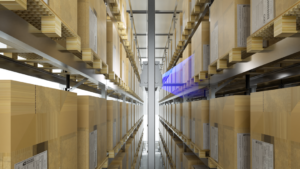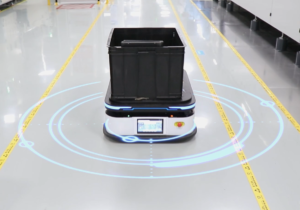Simultaneous Localization and Mapping
(SLAM) technology lies at the heart of modern robotics and autonomous systems, enabling machines to navigate and understand complex environments in real time. However, achieving reliable SLAM performance in busy, unpredictable industrial settings remains a significant challenge. This is where strong research and development (R&D) capabilities make all the difference. By continuously innovating algorithms, hardware, and integration methods, R&D teams are transforming SLAM from a promising concept into practical, robust solutions that empower smarter, more adaptable robots. In this article, we’ll explore how focused R&D is driving these advancements and shaping the future of SLAM technology.
How Does R&D Drive Innovation in SLAM Algorithms?
Developing advanced SLAM algorithms is central to making robots smarter and more reliable. Focused
R&D efforts improve the way robots perceive and navigate their environments, helping them work efficiently in real-world settings.
-
Enhancing Accuracy and Speed
R&D teams constantly refine algorithms to boost localization precision and mapping quality. Faster processing speeds enable robots to react in real time without delays, which is critical in fast-paced industrial environments. Improvements reduce errors and ensure more reliable navigation. These advances make robots better at understanding their exact location, even in complex surroundings.
-
Integrating Artificial Intelligence and Machine Learning
By incorporating AI and machine learning, SLAM systems become more intelligent and adaptable. These technologies help robots recognize objects, detect patterns, and adjust to new or changing environments automatically. Machine learning models enable the system to improve continuously from experience. This adaptability allows robots to handle unexpected obstacles with greater confidence and precision.
-
Improving Sensor Fusion
SLAM depends on combining data from various sensors such as cameras, LiDAR, and inertial measurement units (IMUs). R&D develops sophisticated sensor fusion algorithms to merge these data streams into a single, accurate model of the environment. Effective fusion reduces noise and improves robustness, even when some sensors face interference or limitations. This leads to clearer, more comprehensive environmental mapping.
-
Adapting to Complex Environments
Real-world environments are dynamic and often unpredictable, with moving objects, occlusions, and changing lighting conditions. R&D focuses on making SLAM algorithms resilient to these challenges. Advanced algorithms can differentiate between static and moving objects and maintain mapping accuracy despite obstacles. This robustness ensures robots continue operating smoothly in diverse and challenging conditions.
What Challenges Does SLAM Face in Real-World Environments?
Simultaneous Localization and Mapping (SLAM) technology must operate in highly complex and dynamic environments, which introduces several challenges that can impact its performance. Understanding these hurdles is essential for improving SLAM systems through targeted R&D.
-
Dynamic and Cluttered Environments: Real-world spaces such as warehouses or factories are filled with moving objects, workers, and obstacles that constantly change position, making it difficult for SLAM systems to maintain accurate maps and localization.
-
Sensor Noise and Data Quality Issues: Sensors like cameras and LiDAR can be affected by environmental factors such as dust, lighting changes, reflections, or interference, leading to noisy or incomplete data.
-
Occlusions and Limited Visibility: Objects may block sensors’ line of sight, causing partial or missing data. This occlusion challenges the robot’s ability to understand the full environment.
-
Computational Constraints and Real-Time Requirements: SLAM algorithms must process large amounts of data quickly to allow robots to make real-time decisions. Balancing accuracy with computational efficiency is a constant challenge.
-
Variations in Lighting and Weather Conditions: Changes in lighting, shadows, or outdoor weather can affect sensor performance, especially cameras, complicating the consistency of mapping and localization.
These real-world challenges push SLAM technology beyond theoretical models, demanding continuous innovation and refinement to ensure reliable robot navigation and operation.
How Does MRDVS Apply R&D to Solve SLAM Challenges?
MRDVS leverages strong R&D capabilities to develop practical SLAM solutions that excel in complex industrial environments. Here’s how they approach these challenges:
-
End-to-End Hardware and Software Integration
MRDVS designs both the vision hardware and SLAM software to work seamlessly as a complete system. This tight integration ensures sensors and algorithms complement each other perfectly, improving accuracy and reliability. It also allows for faster troubleshooting and optimization. The result is a robust platform that performs well even in challenging real-world conditions.
-
Advanced Algorithms for Key Industrial Tasks
The R&D team focuses heavily on refining algorithms for
obstacle avoidance and pallet recognition—two crucial functions for industrial robots. These capabilities help robots navigate safely around dynamic obstacles and efficiently identify key objects. Continuous improvements enable robots to operate with higher precision and adaptability. This focus addresses practical needs rather than theoretical possibilities.
-
Rigorous Real-World Testing and Iteration
Testing SLAM solutions in actual warehouses and factories is a core part of MRDVS’s R&D process. Real-world trials uncover issues that controlled labs might miss, such as sensor interference or unpredictable movements. Feedback from these tests drives iterative improvements, fine-tuning the system’s performance. This cycle of testing and refinement builds confidence in deployment readiness.
-
Practical Focus Over Theoretical Models
MRDVS prioritizes developing SLAM systems that work reliably outside the lab. Instead of just aiming for impressive specs on paper, the focus is on robust performance in everyday industrial settings. This practical approach ensures solutions can handle real challenges like occlusions, lighting changes, and sensor noise. It leads to higher customer satisfaction and fewer deployment issues.
-
Collaborative Innovation with Industry Partners
MRDVS actively partners with customers and industry players to better understand their evolving SLAM needs. This collaboration guides R&D efforts and helps develop tailored solutions for diverse applications. Staying connected to real-world demands allows MRDVS to anticipate and solve future challenges. It fosters innovation that is grounded in practical use cases.
How Can You Benefit from Advances in SLAM Technology?
Advancements in SLAM technology are transforming the way autonomous systems operate, offering significant benefits across various industries. Whether you’re managing warehouse automation, manufacturing, or mobile robotics, the latest innovations in SLAM can bring tangible improvements.
Improved Navigation Accuracy: Enhanced SLAM algorithms enable robots to map environments more precisely and localize themselves better, reducing errors and collisions. This leads to safer, more efficient operations.
Greater Operational Efficiency: Robots equipped with advanced SLAM can navigate complex spaces faster and more reliably. This improves productivity by minimizing downtime and optimizing routes.
Enhanced Adaptability to Dynamic Environments: Modern SLAM solutions can handle changing conditions like moving obstacles and variable lighting, allowing robots to work smoothly in real-world settings without constant manual intervention.
Cost Savings Over Time: By reducing errors, accidents, and maintenance needs, advanced SLAM technology helps lower operational costs. Better efficiency also means quicker returns on automation investments.
Scalability and Future-Proofing: Continuous R&D in SLAM ensures your robotic systems can adapt to new challenges and applications as your business grows, protecting your investment over the long term.
Innovations in SLAM Algorithms
SLAM algorithms are at the heart of autonomous navigation, and recent R&D breakthroughs are pushing their capabilities further than ever before. These innovations enable robots to build more accurate maps and localize themselves with greater precision.
One key advancement is the integration of machine learning and AI, allowing SLAM systems to better interpret sensor data, predict obstacles, and adapt to complex environments. This makes navigation smarter and more reliable, especially in dynamic, unpredictable settings.
Another innovation is improved sensor fusion techniques, which combine data from multiple sensors like cameras, LiDAR, and IMUs (inertial measurement units). This fusion creates a richer, more accurate environmental model, overcoming limitations that individual sensors face on their own.
Researchers are also developing real-time optimization algorithms that reduce the computational load while maintaining high accuracy. These improvements enable SLAM to run efficiently on compact, power-constrained robots without sacrificing performance.
Together, these algorithmic innovations are driving SLAM technology toward higher precision, robustness, and flexibility, making autonomous systems more capable across a wide range of industrial applications.
Conclusion
Strong R&D is transforming SLAM technology into practical, reliable solutions that excel in real-world environments. MRDVS leads the way with cutting-edge innovations that boost robot accuracy and efficiency. Ready to upgrade your autonomous systems? Discover how MRDVS’s SLAM expertise can power your next project.


